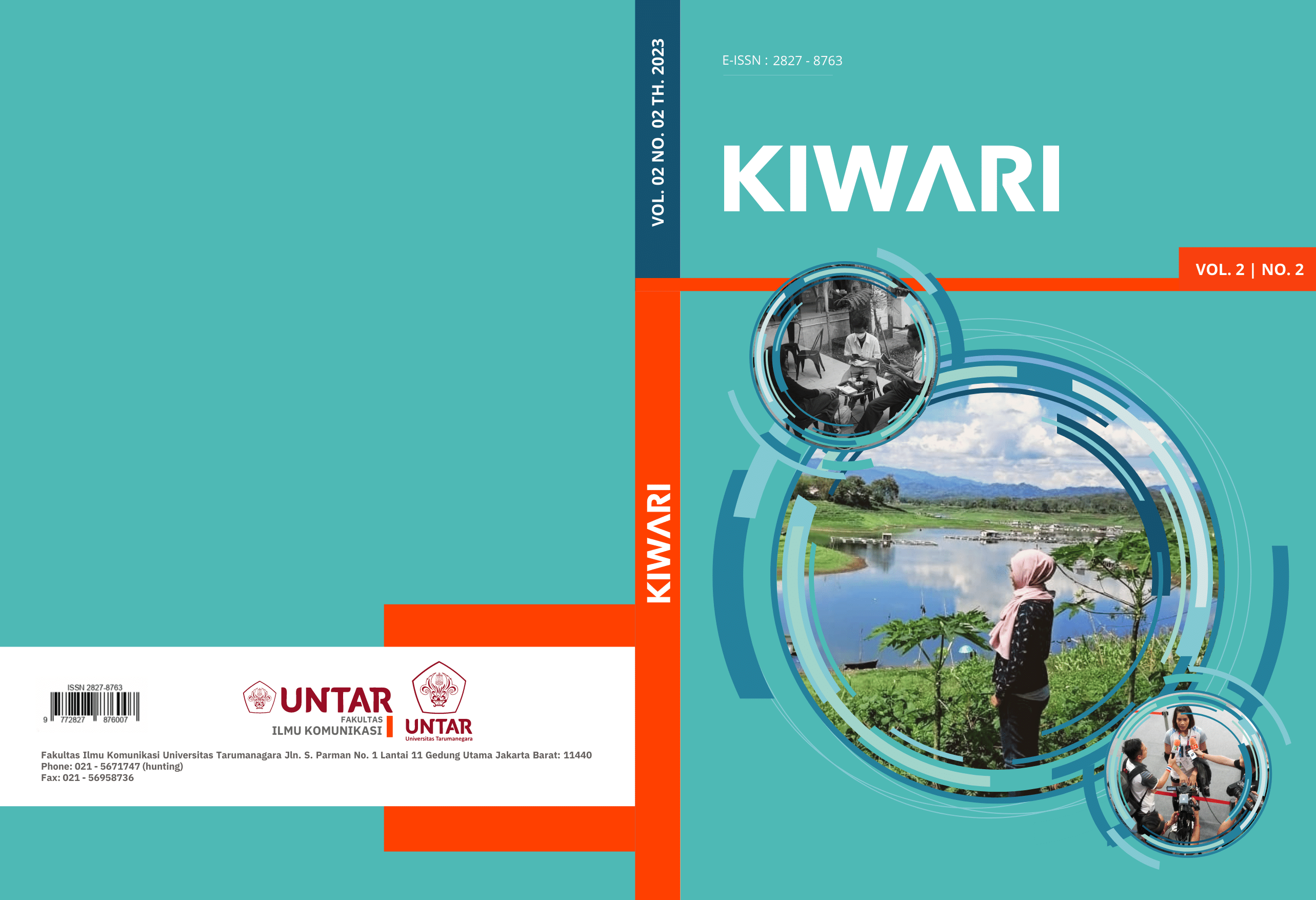Analisis Naratif Lovecraftian Horror dalam Cerita Manga Berserk
Main Article Content
Abstract
Manga is a type of media in the form of text and images that can be studied in communication science using a text analysis approach. One type of manga that has a major influence on manga culture is berserk. Howard Philips Lovecraft's work called lovecraftian became a style of horror writing in literature and became one of the most influential genres in manga culture. The purpose of this research is to describe the lovecraftian horror narrative in Berserk manga by using Todorov's narrative level which consists of equilibrium, disruption, recognizing the disruption, attempt to repair damage, and new equilibrium to see lovecraftian horror elements consisting of sense of dread, the existence of the unfathomable, and human feelings as insignificant living beings. This study uses a qualitative approach. The unit of analysis is the Berserk manga chapters 3 – 8, 18 – 21, 89 – 105. The data collection technique is carried out by studying documents consisting of books or scientific journal articles related to research, and documentation in the form of Berserk manga screenshots. The results of the study show that the Berserk manga has lovecraftian horror elements consisting of a sense of dread, the existence of the unfathomable, and human feelings as insignificant living beings.
Manga adalah salah satu produk media berupa teks dan juga gambar yang dapat diteliti dalam ilmu komunikasi dengan menggunakan pendekatan analisis teks. Salah satu jenis manga yang memiliki pengaruh besar dalam kultur manga adalah berserk. Karya Howard Philips Lovecraft yang disebut lovecraftian menjadi gaya penulisan horror dalam literatur dan menjadi salah satu genre yang berpengaruh dalam kultur manga. Tujuan penelitian ini adalah untuk mendeskripsikan narasi lovecraftian horror dalam manga Berserk dengan menggunakan tingkatan naratif Todorov yang terdiri atas equilibrium, disruption, recognizing the disruption, attempt to repair damage, dan new equilibrium untuk melihat elemen lovecraftian horror yang terdiri dari sense of dread, the existence of the unfathomable, dan perasaan manusia sebagai makhluk hidup yang insignifikan. Penelitian ini menggunakan pendekatan kualitatif. Adapun unit analisisnya adalah manga Berserk chapter 3 – 8, 18 – 21, 89 - 105. Teknik pengambilan data dilakukan dengan studi dokumen yang terdiri dari buku atau artikel jurnal ilmiah yang terkait dengan penelitian, dan dokumentasi berupa screenshot manga Berserk. Hasil penelitian menunjukkan bahwa manga Berserk memiliki elemen lovecraftian horror yang terdiri dari sense of dread, the existence of the unfathomable, dan perasaan manusia sebagai makhluk hidup yang insignifikan.
Article Details

This work is licensed under a Creative Commons Attribution-NonCommercial-ShareAlike 4.0 International License.
This work is licensed under a Prologia Creative Commons Attribution-ShareAlike 4.0 International License.References
Bal, M. (2009). Narratology: Introduction to the Theory of Narrative. Toronto: University of Toronto.
Bayu, Dimas. (2022, May 5). Daftar Manga Terlaris Sepanjang Masa, One Piece Juaranya. Retrieved July 17, 2022, from https://dataindonesia.id/Ragam/detail/daftar-manga-terlaris-sepanjang- masa-one-piece-juaranya
Cangara, Hafidz. (2005). Pengantar Ilmu Komunikasi. Jakarta: PT Raja Grafindo Persada.
Clohecy, N. A. (2019). Losing Our Humanity: The Lovecraftian Sublime and Its Paralysis of Anthropocentrism. A Thesis. Kansas: Emporia State University.
Dwivedi, D. (2018). The Addressee Function, or the Uses of Narratological Laity: Lessons of Khasak. In J. Phelan, P. J. Rabinowitz, K. Byram, D. Dwivedi, H. S. Nielsen, & R. Walsh (Eds.), Narratology & Ideology: Negotiating Context, Form, and Theory, in Postcolonial Narratives (pp. 215-272). Columbus: The Ohio State University Press.
Eriyanto. (2015). Analisis Naratif: Dasar-Dasar dan Penerapannya dalam Analisis Teks Berita Media. Jakarta: Prenadamedia Group.
Herman, L., & Vervaeck, B. (2019). Handbook of Narrative Analysis. (2nd ed). Lincoln: University of Nebraska Press.
Hidayat, Samsudin N. (2019). Representasi Persahabatan dalam Anime “Koe no Katachi”. Skripsi. Surakarta: Universitas Muhamadiyah Surakarta.
Josselson, R. (2011). Narrative Research: Constructing, Deconstructing, and Reconstructing Story. In F. J. Wertz, K. Charmaz, L. M. McMullen, J. Ruthellen, R. Anderson, & E. McSpadden, Five Ways of Doing Qualitative Analysis: Phenomological Psychology, Grounded Theory, Discourse Analysis, Narrative Research, and Intuitive Inquiry (pp. 224-242). New York: Guilford Press.
Listiyanto, R., & Fauzi, A. (2016). A narrative analysis of an english teacher‟s experience in using Prezi Presentation software in teaching vocabulary. Proceeding The 2nd International Conference On Teacher Training and Education Sebelas Maret University, 2(1), 5–6.
Romli, Khomsahrial. (2016). KOMUNIKASI MASSA. Jakarta: PT Grasindo.
Synder, P. J. (2017). "Dreadful Reality: Fear and Madness in the Fiction of H. P. Lovecraft". Honors Theses. Mississippi: University of Southern Mississippi.
Thomas, E. E. (2018). Toward a Theory of the Dark Fantastic: The Role of Racial Difference in Young Adult Speculative Fiction and Media. Journal of Language and Literacy Education, 1-10.
Varotsis, G. (2015). Screenplay and Narrative Theory: The Screenplectics Model of Complex Narrative Systems. Maryland: Lexington Book.
Watson, A. (2021, Jun 1). Manga sales growth in the United States in 2019 and 2020. United States. Retrieved March 30, 2022, from https://www.statista.com/statistics/1090528/manga-sales-us/
Wilson, E. (Ed.). (2016). The Dual State: Parapolitics, Carl Schmitt and the National Security Complex. Routledge.



